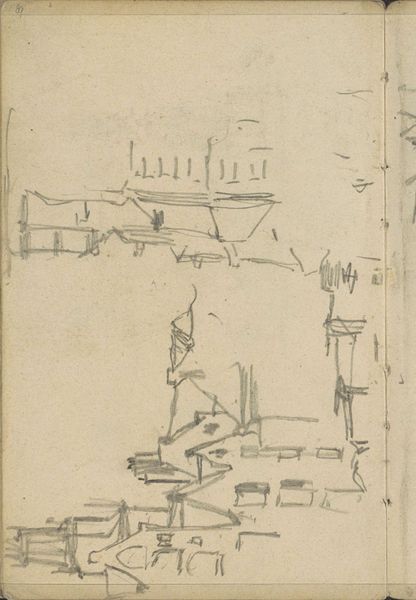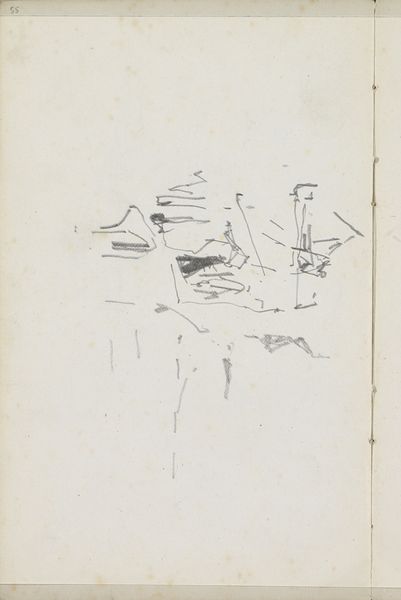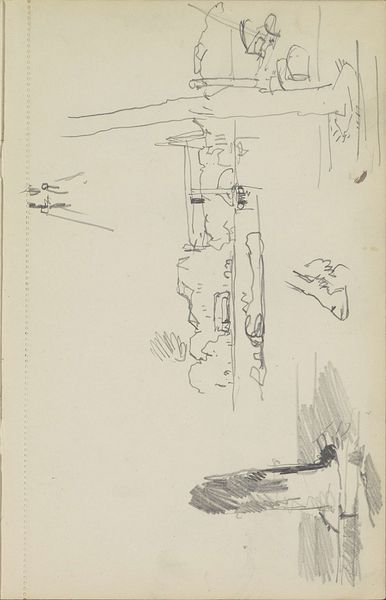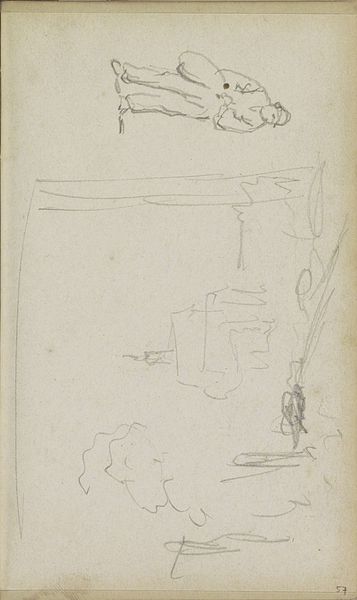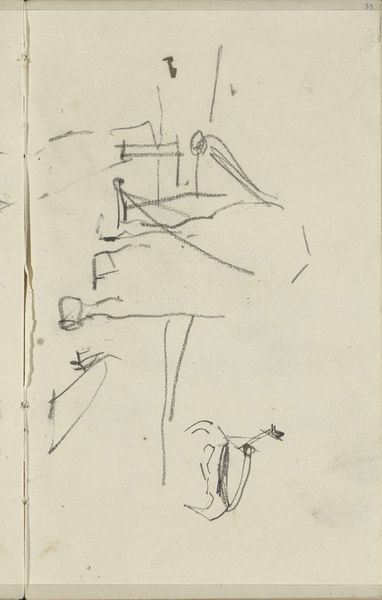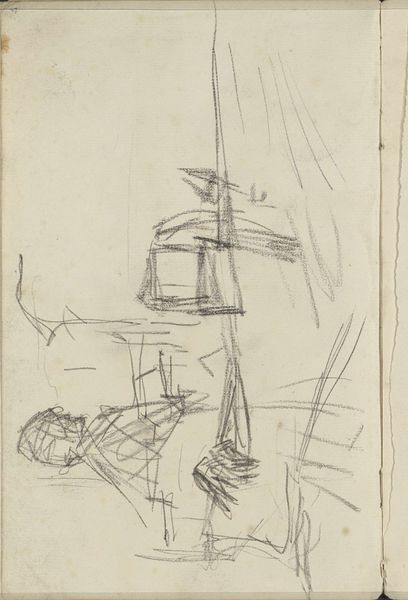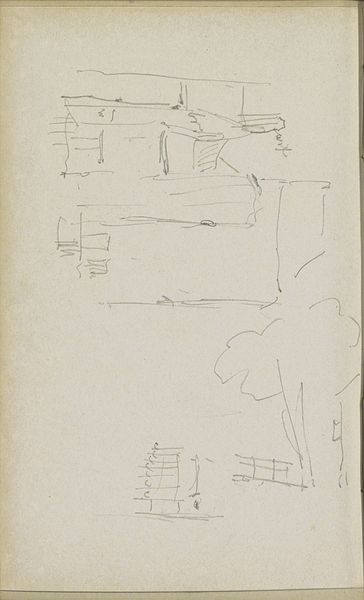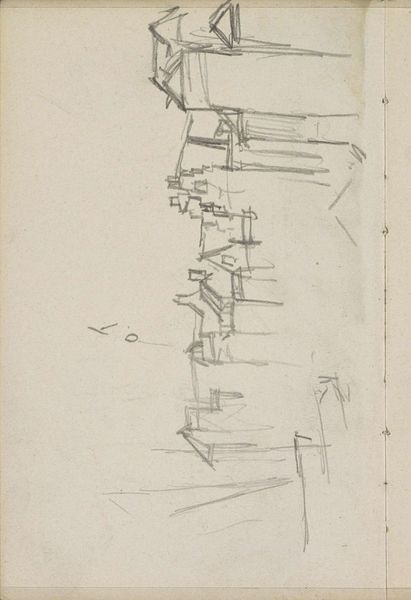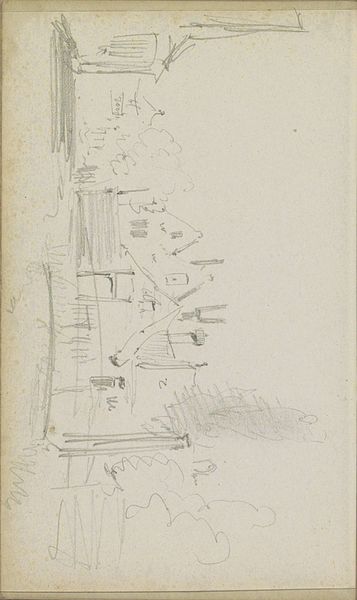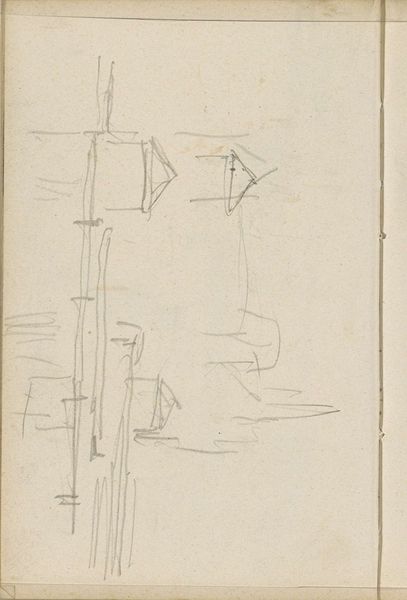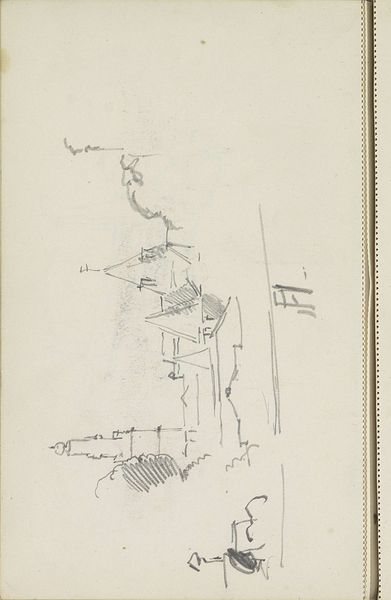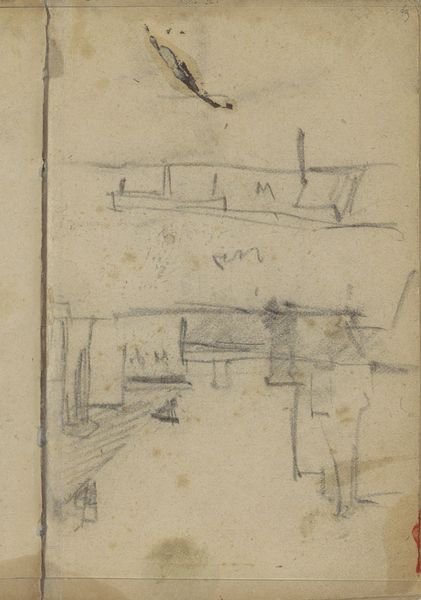
drawing, pencil
#
drawing
#
impressionism
#
landscape
#
sketchwork
#
pencil
#
sketchbook drawing
#
cityscape
Copyright: Rijks Museum: Open Domain
Curator: So, here we have George Hendrik Breitner’s “Stadsgezicht met molens,” or “Cityscape with Windmills,” a pencil drawing from 1880-1882. It's currently held here at the Rijksmuseum. Editor: It's so raw! Like a fleeting thought captured in graphite. The bare minimum needed to convey the essence of…well, windmills, I presume? Curator: Yes, and the surrounding cityscape. What’s compelling is Breitner’s impressionistic leanings, even in this simple drawing. Notice how he prioritizes capturing the feeling of a scene over precise representation. The material is humble, but the vision is quite powerful. Editor: The rapid strokes, the almost skeletal rendition of these mills—they speak volumes about the pace of industrial change. Breitner isn’t just sketching a pretty scene, he’s hinting at the labor tied to those structures, to the very grain they were grinding. And look at how easily these windmills might be replaced by factories… Curator: That's insightful. And consider the context—Breitner belonged to a generation of artists keenly aware of the shifting social landscape of the Netherlands. The city was rapidly transforming, old industries giving way to new, and the role of art was being renegotiated. This piece is a quiet reflection of that tumult. Editor: It feels almost…activist. Breitner’s making the statement with a common pencil. Think of the distribution networks involved – graphite mines, timber for pencils, paper mills churning away… all feeding into a seemingly simple artwork which is actually embedded with material history! Curator: Fascinating way to read the work. His choice of such a readily available medium definitely democratizes the image-making process, bringing the artist's view of the city into wider circulation, compared to the more costly painting or printmaking techniques. Editor: Absolutely. And even now, Breitner's sketchbook reveals itself – these rapid markings give a sense of how he moved between working life and his studio; that liminal state shaped the man! Curator: It’s pieces like this that really remind us how drawings function in an artist's broader practice. Not simply studies or preparatory works, but legitimate expressions in themselves. Editor: Right. Well, I definitely look at windmills – and sketchbooks - differently now!
Comments
No comments
Be the first to comment and join the conversation on the ultimate creative platform.
